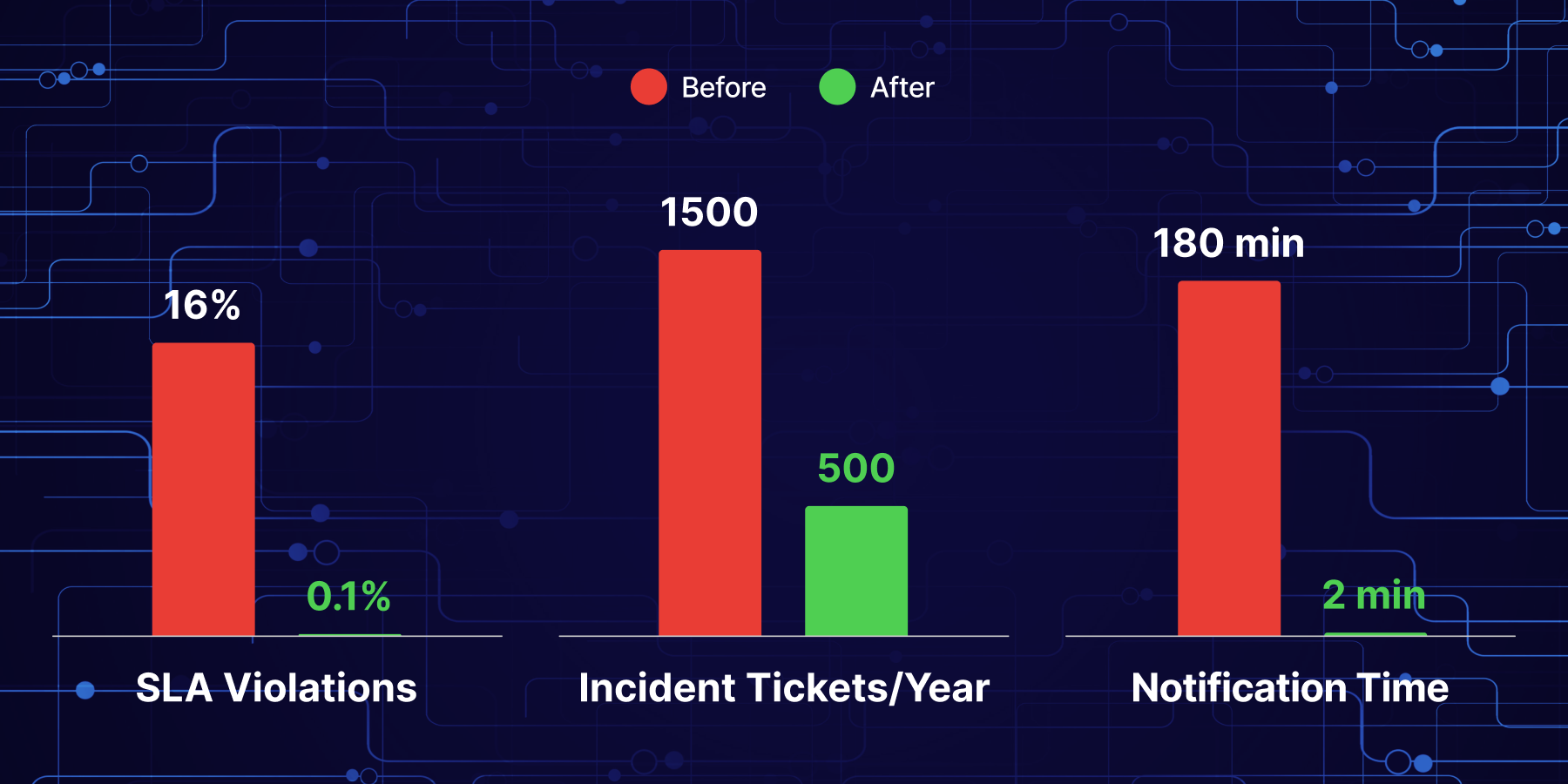How SAP achieved world-class uptime through modern observability
SAP Customer Experience (CX) has undergone a remarkable transformation over recent years, evolving from fragmented monitoring to a scalable, automated observability powerhouse. In a recent fireside chat, Martin Norato Auer, SAP CX’s VP of Observability, shed light on the strategies, practices, and measurable impacts behind SAP’s SLA, uptime, and responsiveness achievements.
SAP Commerce (formerly SAP Hybris) is an enterprise-grade e-commerce platform designed to unify and manage digital commerce across B2B, B2C, and B2B2C business models. It empowers businesses to deliver consistent, personalized, and seamless customer experiences across web, mobile, social, and physical channels.
SAP Commerce is trusted by thousands of customers worldwide, with a particular concentration among large enterprises, including global leaders such as Alphabet, Shell, Cigna, British Petroleum, and Mercedes-Benz Group.
Raising the bar: SLA and uptime breakthroughs
- SLA Violation Reduction: SAP CX cut SLA violations from 16% to just 0.1%, bringing them close to their long-term goal of zero downtime for customers.
- Dramatic Ticket Reduction: The team slashed incident tickets from approximately 1,500 per year to 500, a two-thirds drop reflecting improved stability and proactive issue prevention.
- Lightning-Fast Customer Notifications: Average time to inform customers about incidents plummeted from 180 minutes to just 2 minutes after incident detection.

For SAP Commerce customers, uptime and performance are critical because even brief disruptions or slowdowns can lead to lost revenue, diminished customer trust, and missed opportunities in highly competitive, always-on global markets.
Strategies for faster problem identification
- Unified Observability Stack: SAP consolidated over ten fragmented monitoring tools into a cohesive platform—primarily Dynatrace for application performance and Catchpoint for Internet Performance Monitoring. This move drastically improved signal quality, reduced noise, and accelerated incident identification.
- Automated Alert Relevance Filtering: Rather than simply multiplying alert volumes, SAP developed smart algorithms to distinguish truly relevant incidents, ensuring that human experts focus only on the most business-critical events.
- Workflow Automation: By analyzing each stage of the incident notification chain, SAP introduced automation and APIs to eliminate manual handoffs wherever possible, while maintaining critical verification steps for high-stakes communications.
- Proactive and Predictive Monitoring: The shift from reactive to predictive monitoring enabled SAP to spot potential issues and intervene before they impacted customers, leveraging dashboards that flag availability risk in advance.
Best practices that drove transformation
Large IT operations teams often face significant barriers when trying to implement transformative changes and adopt best practices. These challenges stem from a mix of organizational, cultural, and technical factors that compound as teams and systems grow in size and complexity. Here are some of the best practices SAP Commerce implemented:
- Continuous Data Analysis: Every incident—missed or delayed—triggered a root cause analysis and process iteration, improving detection logic and reducing blind spots.
- Process Transparency: Clear mapping of all steps needed for detection, triage, customer communication, and escalation allowed for targeted automation and efficiency gains.
- Global Team Collaboration: A dispersed, cross-continental team structure enabled 24/7 coverage and quick mobilization for major events like Black Friday.
- Leadership Engagement and Mobile Insights: SAP developed internal mobile apps to provide leadership with real-time, high-level incident summaries, enabling informed responses to customer inquiries within seconds.
- AI for Summarization and Analysis: Generative AI tools summarized bridge call transcripts and communications, allowing both technical and non-technical users to grasp incident status instantly.
Transforming large, complex IT operations is challenging due to friction across people, processes, and platforms. Addressing these barriers requires strong, visible leadership, clear communication, aligning strategy to daily tasks, breaking down silos, modernizing legacy systems, investing in training, and adopting unified metrics. Only with an integrated, culture-sensitive approach can these organizations drive real, lasting change and successfully implement best practices
Lessons for the Enterprise
SAP Commerce has achieved global recognition as a leader in observability by transforming its operations into one of the most advanced, reliable, and responsive teams in the enterprise software industry. This evolution reflects a relentless drive to meet—and exceed—the high-availability, performance, and transparency demands of some of the world’s most complex businesses.
SAP’s journey highlights several key takeaways:
- Tool consolidation is essential for reducing complexity and noise, enabling true end-to-end visibility.
- Automation, not just monitoring, is key to shrinking response times and scale operations.
- Customer-centric communication transforms incident management from technical firefighting into a trust-building opportunity.
- Combining APM insights with IPM visibility enabled SAP Commerce to achieve comprehensive, end-to-end visibility—integrating deep application diagnostics (system logs, infrastructure metrics, code traces) with internet performance monitoring (Catchpoint IPM) —to quickly identify, prevent, and resolve incidents, thereby meeting their ambitious uptime and SLA goals while delivering an unparalleled customer experience.
- Continuous improvement and data-driven iteration are the heartbeat of durable operational excellence.
By adopting these practices, SAP CX not only drove measurable, world-class improvements in SLA adherence, availability, and incident response, but also ensured SAP Commerce is trusted by organizations demanding the utmost in reliability, performance, and customer transparency.
Watch the full fireside chat: Observability Lessons and Practices from a Fortune 500 Leader




